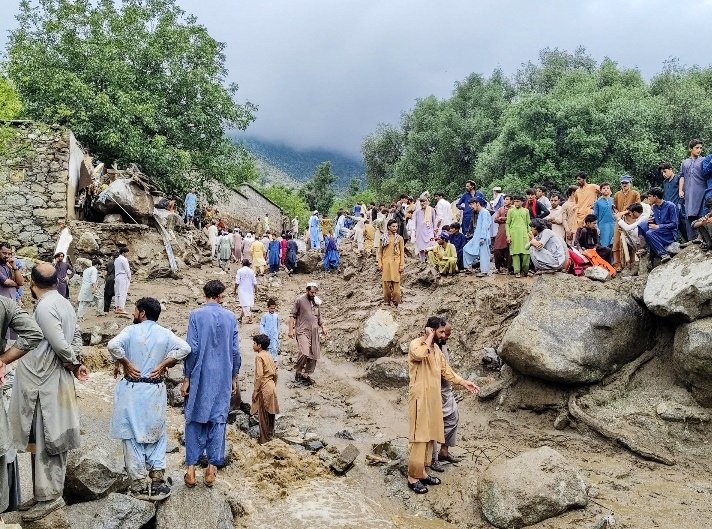By Matija Šerić
Pakistan is one of the countries most affected by climate change, and recent events tragically illustrate this reality. Heavy monsoon rains that began over the weekend have triggered flash floods, landslides, and deadly lightning strikes, resulting in a catastrophic natural disaster no one wants to experience. Between August 15 and 18, more than 350 people lost their lives, and 180 were injured. When including other floods that occurred in Pakistan from June 26 to August 18, the death toll rises to around 650. These numbers are far from final, as many victims remain trapped in mud-covered ruins of unrecognizable homes.
A Romantic Province Turns Into the Epicenter of Apocalypse
The hardest-hit region is the northwestern Pakistani province of Khyber Pakhtunkhwa, bordering Afghanistan. Although the smallest in terms of area, Khyber Pakhtunkhwa ranks third in Pakistan for both economy and population, with a multiethnic demographic dominated by Pashtuns. The region is famed for its romantic mountain landscapes, featuring mountain ranges, forests, valleys, steep slopes, and extensive agricultural land.
Northwestern Pakistan has a history of devastating floods. Recently, the Buner district suffered the most, as the Swat River overflowed, creating an apocalyptic scene. Locals reported that no warnings were issued via mosque loudspeakers, a traditional method of alerting residents in remote mountainous areas. According to the government, the rainfall was so sudden and destructive that the flood swept through Buner before authorities could respond.
Other regions of Pakistan, as well as parts of Indian-administered Kashmir, were also affected. In northern Pakistan’s Gilgit-Baltistan region, sudden floods isolated numerous villages, destroyed farms, and blocked key roads. Local communities were left without drinking water, electricity, or internet. Frustrated residents of Gilgit protested in the streets over prolonged shortages of food and essential supplies.
Catastrophic Floods in Pakistan
Government Response – Adequate or Not?
“My heartfelt condolences go out to the grieving families. In this hour of sorrow, we stand in solidarity with our brothers and sisters. The government is mobilizing all resources for rescue operations and relief efforts,” wrote Pakistani Prime Minister Shehbaz Sharif on X (formerly Twitter). According to Sharif, rescue teams, including military helicopters and personnel, are working tirelessly to reach the most affected areas and clear debris. He personally called on federal ministers to coordinate relief efforts. The army has also established an air bridge between Karachi and Peshawar to deliver 48 tons of food.
However, many locals argue that the government response has been insufficient. They claim they were left to fend for themselves, with no real support or empathy from officials—some politicians merely drove around in SUVs for appearances. Most victims hope that essential humanitarian aid and heavy machinery for clearing debris will arrive soon. They also expect concrete government measures to rebuild homes, as many residents have lost everything and face the risk of disease (dysentery, cholera, malaria) and hunger without prompt assistance.
UN Offers Aid, Pakistan Declines, and More Catastrophes Loom
UN Secretary-General António Guterres expressed deep concern over the human suffering caused by monsoon rains and offered UN assistance teams operating in Pakistan and India. The Pakistani government, however, stated at a press conference that it has sufficient resources for rescue and recovery operations, insisting that international aid is not currently necessary.
Pakistani officials warn that two to three more waves of monsoon rains could hit the country next month, raising serious concerns about additional floods and damage to already affected communities. Khyber Pakhtunkhwa has allocated 1.5 billion Pakistani rupees (approximately €4.5 million) for emergency interventions, prioritizing the hardest-hit districts, including Buner, Mansehra, Swat, and Shangla.
Why is Pakistan so susceptible to climate change?
Climate Change – Pakistan’s Achille’s Heel
Floods in Pakistan are not new. However, the impact of climate change makes the situation increasingly unbearable each year. According to the UN Development Programme, unprecedented floods in 2022 submerged a third of the country, caused around 15,000 deaths or injuries, and displaced eight million people. Pakistan is particularly vulnerable to climate change due to its geographic location.
This predominantly Muslim country lies between high northern mountain ranges (Himalayas, Hindu Kush, and Karakoram) and arid southern plains, with proximity to the Indian Ocean. This geography makes it highly susceptible to extreme weather events. Threats include melting glaciers, tropical cyclones, and torrential monsoon rains, affecting millions of people. Flooding occurs as numerous rivers, including the Indus, Chenab, Ravi, and Sutlej, overflow. A 2022 study by World Weather Attribution concluded that climate change contributes to the increased intensity and frequency of extreme monsoon rains, further endangering vulnerable communities in Pakistan.
The outlook is worrying. Pakistan can combat climate change by building sustainable (green) infrastructure, promoting renewable energy, and developing smart flood and drought management systems. Empowering local communities through education and disaster preparedness can transform vulnerability into resilience. Yet, climate change remains a formidable challenge that will not disappear from everyday life in Pakistan anytime soon.








